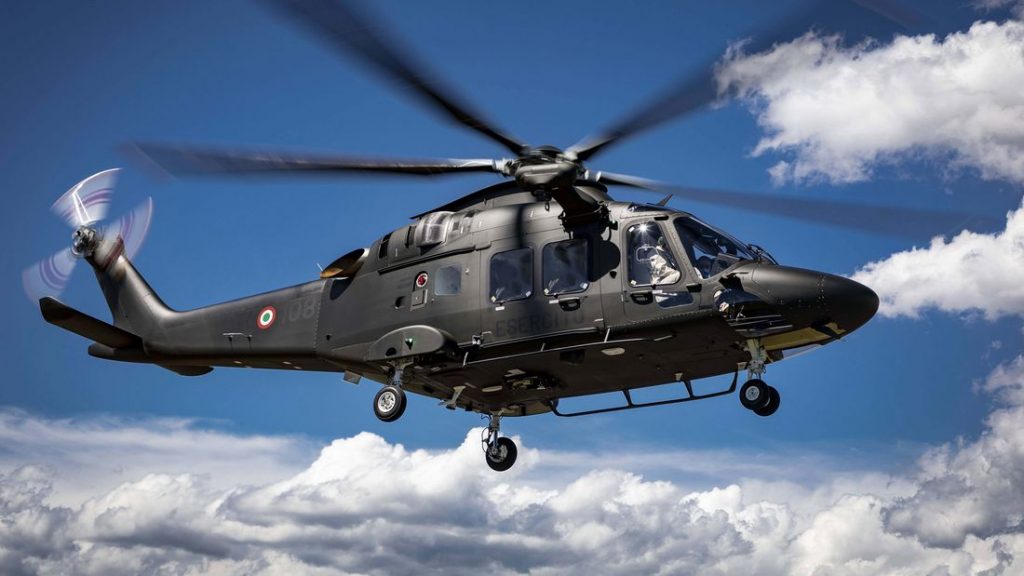The multi-year program under consideration in September in Italian Parliament relating to the acquisition of new light helicopters to replace legacy fleets and the construction of the ground segment called Ground Based Training System (GBTS) for the training of pilots of the Italian Air Force, the Armed Forces and the State Corps. As part of the project to rationalize the operational lines of the “light” helicopter segment of the Defense, a gradual replacement of the 6 legacy fleets with a single helicopter, the Leonardo Aw-169 LUH, is planned.
The need of the Defense is to be able to continue to guarantee, a high quality level to the training and training function of the New Helicopter School of Viterbo – as a reference center in the field of flight training for the rotary wing of the Air Force – equipping itself with a training system that includes a helicopter to be placed between the initial training (ie the cd. Phase 3a, currently carried out on TH500) and the advanced machines present in the operating departments.
The Defense points out that the new helicopter will have to meet the training requirements of Phase 3b (carried out ad interim on Leonardo UH-139 helicopter), adapting the training of personnel to the new standards imposed by technological innovation, allowing pilots in training to obtain the flight patents required by the current regulatory framework.
To meet these needs, it will be necessary to create an Integrated Training System (ITS) consisting of: the Leonardo AW-169 LUH helicopter (flight segment) twin-engine, able to fly according to the rules of instrument flight and the set of integrated training subsystems (ground segment) called Ground Based Training System(GBTS). The ground-based theoretical education system will consist of teaching devices and simulation systems for ground training. The GBTS will be used for the activity of pilots, specialists and maintainers. Its integration with the helicopter, which represents the flight segment of the entire system, forms the basis for ensuring high efficiency, both from a technical and economic point of view. Lessons and briefings dedicated to the training of flight and ground personnel will be included in this segment.
The new helicopter will also have to guarantee an adequate level of interoperability with other similar national systems and in service with allied countries, in terms of sharing mission data for joint training and training activities. Standardization will be pursued in terms of compatibility, interoperability, interchangeability and commonality with what is already in service at the national FF.a.a. and allied countries. The joint feature of the LUH program will guarantee a 360° standardization in the training, operational and logistics fields in the Defense field.
The program presents ample opportunities for international cooperation and export. Civil versions of Leonardo AW-169 helicopters have already been exported to more than 10 countries, for a total of about 100 machines. Recently, an agreement was finalized for a contract by the Austrian Ministry of Defense, for the acquisition of 18 AW-169 helicopters to be allocated to the Army through a “Gov-to-Gov” operation. The acquisition and development of new versions for Defense will provide a significant image return, further favoring the possibility of acquiring new customers, especially in the military sector.
The minimum crew must consist of a single pilot, therefore the helicopter must be certified to operate also “single pilot” both according to the rules of instrument flight (Instrumental Flight Rules) and according to visual flight (Visual Flight Rules). The helicopter will be used in the main role of trainer for the achievement of the military pilot license and the military helicopter pilot license.
The GBTS aims to transfer to the personnel in training (student pilots, pilots, instructors) the knowledge and theoretical-practical preparation necessary to face the flight segment of the training process, and must include: LUH Academie Training System (ATS), a tool necessary to provide students with adequate theoretical and procedural knowledge, consisting of 3 computerized classrooms (for 25 students and one instructor each); Mission Planning and Debriefing System (MPDS), a tool necessary for carrying out planning, pre-mission briefing and post-mission de-briefing. The hardware will consist of 5 fixed and 100 mobile workstations (tablets); Simulation systems with increasing complexity, which constitute the “practical” component of the GBTS and allow the performance of different training phases preparatory to real flight activity.
As regards duration, the programme is designed according to a multiannual development plan scheduled to start in 2022 and last a total of ten years (2022-2031). The acquisition of the first machines is expected starting from 2023, in number of 3-4 helicopters per year, during a period of about 8 years (last machine delivery in 2030). During the 10-year duration of the program, the preparation of the GBTS, the acquisition of the entire fleet (30 machines) and the related logistical support will be completed. The program initially foresees the start of the design and construction of the ground segment (GBTS) from 2022, as an enabling element for the rest of the program. The total cost is estimated at 653 M€.
Follow us on our Telegram channel

